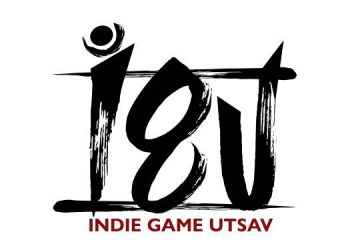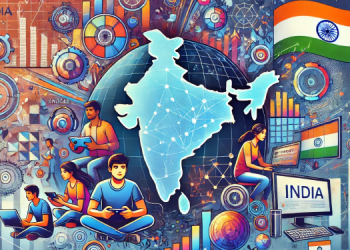MUMBAI: Online gaming will drive the Make-in-India agenda according to the Fici EY Report.
Overall, the online gaming segment will remain one of the driving forces behind the growth of the broader AVGC sector, consistently creating employment opportunities across all phases of game development and distribution, including design, game-art, coding, marketing, and user support
The current environment is resulting in more Indian game development companies starting to serve international markets from India, where regulations are more favourable, either by setting up operations there or by making targeted acquisitions
Their experience in working in these markets is increasing at a time when mobile gaming, AA games and indie gaming are growing in importance globally, with the largest game developers planning strategic investments in the medium10. Given India’s mobile-first gaming
capabilities, it can become the gaming back-office of the world. At scale in the medium term, this can add $3.75 billion to India’s exports annually by 202811
Revenue is expected to reach Rs. 316 billion by 2027
The online gaming segment is projected to grow at a CAGR of 10.8% over the next three years, reaching Rs. 316 billion by 2027
The report anticipates the esports and casual sub-segment will grow at a 16% CAGR as compared to the transactionbased sub-segment which we expect will grow at 9% unless illegal and offshore betting apps are curtailed
As a result, the share of esports and casual gaming in total online gaming revenues is expected to rise to 26% by 2027, up from 19% in 2022
In-app purchases are expected to grow at 20% CAGR on the back of new titles, increasing interest in immersive gaming experiences, particularly mid-core and hardcore
games, the rise of cloud gaming platforms that enhance accessibility and continued growth in per capita income and a rising share of digital payments, including smoother transactions for gaming
Esports is projected to grow by 13% on the back of higher prize money (aided by the return of Free Fire tournaments), growth in professional teams, titles like Asphalt and Mobile Legends making their India entry, and rising popularity of Indian titles like Indus Battle Royale, Underworld Gang Wars, Road to Valor and FAU-G
Regulatory certainty will drive investment
Immediate clarity on retrospective GST taxation is essential to enable RMG companies to:
ƒ Focus on innovation, diversification and other growth-oriented initiatives
ƒ Boost investor confidence, paving the way for increased funding and FDI
ƒ Explore opportunities for public listing, enhancing market visibility and access to capital
Gaming firms welcomed the Supreme Court’s recent decision to stay the GST show cause notices, with the final hearing scheduled for March 2025, providing temporary relief from potential tax penalties
Stringent measures are required to curb illegal and offshore operators offering betting and other banned games, ensuring regulatory compliance and a level playing field for all stakeholders
The regulator must clearly define permissible advertising standards and permissions for money games, ensuring that promotional content is not misleading and permitted for legal games only
Platform and multi-platform strategies
With GST now being applied to deposits, single-game operators face significant challenges, as frequent withdrawals and deposits amplify the tax burden and erode profitability
A platform strategy, which integrates multiple games under a single ecosystem, offers a compelling solution. It drives higher spin rates, mitigating the GST impact by circulating deposits within different games on the platform. Moreover, it ensures sustained player
engagement
An increasing number of gaming companies are expected to adopt this strategy soon to ensure long-term growth and resilience, as well as increasing game availability to multiple platforms rather than being exclusive
A robust publishing ecosystem
India’s gaming segment lacks a strong publishing framework, limiting the growth of local developers and restricting the global reach of Indian-made games. This issue is particularly significant for mid-core and complex game genres, leading local developers to primarily
target casual or hyper-casual games markets
Increasing customer acquisition costs also prohibits adequate investment in game release and distribution
Consequently, the development of a structured publishing ecosystem is expected, which will propel the growth of India’s online gaming segment by:
ƒ Attracting increased funding for developers, enabling them to focus on creativity and innovation
ƒ Enabling access to global markets
ƒ Facilitating strategic partnerships with global studios to enhance game development quality
ƒ Build marketing efficiencies using 1P data
Made-for-India games
Industry discussions indicate that there are over 1,000 game development companies and start-ups in India; and hence the coming years will see a marked shift towards localized game content catering to India’s diverse audience across multiple languages
Drawing inspiration from the success of BGMI and Free Fire, we will see a rise in Indian-made games. Some notable examples include:
ƒ MPL backed Mayhem Studios launched beta version for Underworld Gang Wars achieving over six million pre-registrations
ƒ SuperGaming launched beta version for Indus with more than five million downloads13
ƒ Nazara Publishing announced the beta launch for FAU-G, developed by Mumbai based Dot9 Games14
These developments will not only foster skill building but also create jobs and drive growth across the gaming value chain
Expansion into niche categories such as educational games, region specific skill-based games, mythological games and esports is expected to further enrich the
gaming landscape
Cricket: Converting fans to players
India’s unmatched passion for cricket presents an opportunity for cricket esports to transform the gaming landscape
With strategic execution, a robust cricket esports IP could emerge as a contender against global franchises like EA Sports FC or NBA-2K; JetSynthesys has already launched its cricket sports league, and the BCCI has released an RFP for its own esports game
The report believes that such initiatives could redefine not only gaming and esports in India but also position India as a significant esports player on the global stage
Free-to-Play (F2P) games will dominate
F2P games remain a cornerstone of the gaming industry
Simplicity and accessibility of F2P games will continue to attract a broad player base as players prioritise value-driven experiences
We can expect to see innovations around building and maintaining communities to cultivate loyalty, creation of games for older and more affluent audiences, and more women-based games.

















